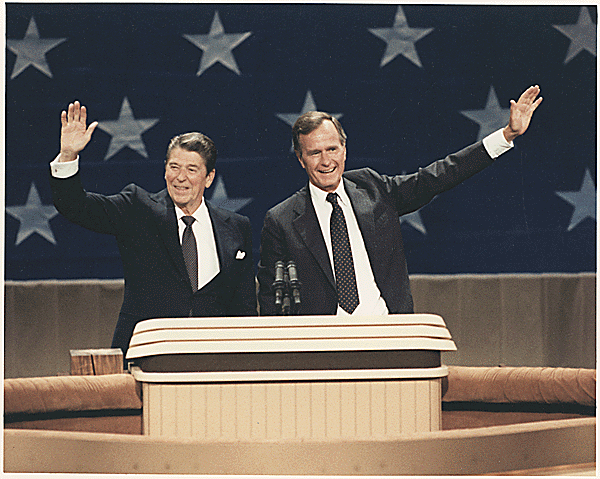The massive flow of money into politics has generated widespread concerns about its impact on political equality. Political campaigns’ increased reliance on private contributions has meant that the rich can exert far greater influence than citizens with lesser means. One insufficiently discussed route by which the super-rich can obtain outsized political clout is through ownership of media outlets. Media ownership allows the wealthy to influence the content reported by the outlets they control and possibly affect both public opinion and voting in a way that advances their partisan preferences.
The ways in which the ultra-rich do so vary. In some cases, as with Rupert Murdoch—owner of Fox News, Wall Street Journal, and various British tabloids—media control has generated not only immense profits, but also exceptional political access. In other instances, as in Turkey and Hungary, wealthy businessmen with close ties to the government acquired existing media outlets at the strong behest of the leadership—Erdogan and Orban, respectively—who sought to use those outlets to promulgate their political message and silence oppositional voices. And yet in other cases, such as Berlusconi in Italy and Blocher in Switzerland, business tycoons have leveraged their ownership of media outlets to advance their own political ambitions.
This trend raises the important question of whether media ownership can exert influence in the current decentralized media landscape. Estimating the political impact of slanted media is hard because individuals select into consuming news outlets, in part because those outlets align with their ideological beliefs to begin with. It is therefore an open question whether exposure to news coverage of an opposing political view persuades consumers, or whether people filter out incongruent messaging altogether.
Our study investigates a case in which the first problem—consumers selecting not to read partisan media with a slant that differs from their own—is largely circumvented by the outlet’s marketing strategy: a free newspaper with broad geographic spread and an aggressive outreach approach. Thus, the question we study is squarely the latter: conditional on exposure to politically incongruent news media with both a strong and well-known ideological slant, what is its impact on policy preferences, vote choice and turnout?
We focus on the case of Israel Hayom (henceforth IH), an Israeli daily newspaper owned by Sheldon Adelson, an American billionaire who, until his recent passing, was one of the largest donors to the Republican Party. Adelson, at the encouragement of the then-opposition leader Benjamin Netanyahu, launched the newspaper in 2007 in order to “balance” an alleged liberal media landscape. The newspaper was to be handed out for free with the management proclaiming that over time, a large readership will allow it to make a profit from advertising (in fact, IH loses about $27 million a year). Despite accusations of being politically biased, within four years of circulation IH became the most widely read newspaper nationally, including by many on the center and the left. We examine the electoral implications of the phenomenal rise in the newspaper’s circulation among the broad Israeli public.
To do so, we first analyze the text of hundreds of IH issues and compare them to the content published in Yediot—Israel’s most mainstream (secular, centrist) newspaper—over this period. We find that IH’s right-wing slant manifested itself not only in more right-leaning coverage of the same news items, but also in the news domains it chose to cover, and in its use of visuals that were more favorable to the right, and specifically to Netanyahu and the Likud party.
We then use an array of estimation approaches to examine exposure rates to Israeli newspapers over a decade. We find a strong positive relationship between higher rates of IH readership and support for the right bloc, and particularly for the Likud (see Figure, showing the estimated effect of exposure to IH, by bloc and party). These findings are robust to controlling for pre-treatment variables that are known to affect voting in Israel. To alleviate concerns regarding reverse causality, we also use an instrumental variable approach that exploits exposure rates to Yediot in the period prior to IH’s 2007 launch.

Note: The effects of IH on parties’ vote share (estimates from a TWFE model). DV: IB stands for Israel Beytenu party; BY stands for the Bayit Yehudi party. Labor stands for Avoda / Ha’Machane Ha’Zioni.
We estimate that an increase of one standard deviation in IH readership caused about a 1.5-2% increase in right bloc vote share in 2013 and 2015. This is a substantively meaningful effect in the Israeli context, where elections are often decided on narrow margins. When comparing localities at the 25th percentile of exposure to the newspaper to localities at the 75th percentile, we find that the latter’s voting for right-bloc parties was 2.1 percentage points higher. As these estimates are based on the localized effects of IH (i.e., within region), they likely reflect a lower bound.
Exploring the mechanisms underlying these findings, we find that exposure to IH had no discernible effect on turnout. Instead, the effect came about primarily through persuasion. Further analysis of individual-level survey data suggests that this shift in vote choice was likely due to the impact IH’s coverage on the readers’ views on security-related matters and on Netanyahu’s qualities as a leader.
Our findings speak to the debate regarding the impact of slanted media on public opinion and voting behavior. Contra to scholars who downplay the possibility that media with a widely known slant can exert a substantial impact on political attitudes and behavior, we show that that is not always the case. Once the outreach model of the newspaper overcomes partisan sorting and reaches voters from outside the newspaper’s ideological base, persuasion does take place and can be politically consequential.
From a policy perspective, our findings indicate that policymakers should not treat news media as a ‘regular’ consumer good. Instead, regulators should pay attention to the prospect of interested individuals (including non-citizens) exerting outsized political influence by obtaining control of media outlets—sometimes at the behest of connected politicians—thereby bypassing campaign finance laws.
Finally, our results highlight an important feature of contemporary Israeli politics. Whereas left and right used to be evenly balanced rival camps in the 1980s and 1990s, the right has gained unprecedented dominance in recent years, with Netanyahu’s premiership spanning over a decade, making him the longest serving Israeli prime minister. There are a multitude of reasons for this rightward shift, but our study points to an important and heretofore understudied factor: the successful launch of Israel Hayom.
This blog piece is based on the article “How the Ultrarich Use Media Ownership as a Political Investment” by Guy Grossman, Yotam Margalit, and Tamar Mitts, forthcoming in the JOP.
The empirical analysis of this article has been successfully replicated by the JOP. Data and supporting materials necessary to reproduce the numerical results in the article are available in the JOP Dataverse.
About the authors
 Guy Grossman is a professor in the Political Science Department at the University of Pennsylvania. His research is in applied political economy, with a substantive focus on governance, migration and forced displacement, human trafficking, and conflict processes, (mostly) in the context of developing countries. You can find further information here and follow him on Twitter: @guygrossman
Guy Grossman is a professor in the Political Science Department at the University of Pennsylvania. His research is in applied political economy, with a substantive focus on governance, migration and forced displacement, human trafficking, and conflict processes, (mostly) in the context of developing countries. You can find further information here and follow him on Twitter: @guygrossman
 Yotam Margalit is the Brian Mulroney Chair in Government and a Professor at the Political Science Department in Tel Aviv University. He specializes in international and comparative political economy. Much of his research deals with the political consequences of globalization, particularly immigration and international trade. He also studies the sources of individual preferences on economic policy and the way changing personal circumstances shapes political views. You can find further information here.
Yotam Margalit is the Brian Mulroney Chair in Government and a Professor at the Political Science Department in Tel Aviv University. He specializes in international and comparative political economy. Much of his research deals with the political consequences of globalization, particularly immigration and international trade. He also studies the sources of individual preferences on economic policy and the way changing personal circumstances shapes political views. You can find further information here.
 Tamar Mitts is an Assistant Professor at the School of International and Public Affairs and a Faculty Member at the Data Science Institute and the Saltzman Institute of War and Peace Studies at Columbia University. Her research uses computational tools to advance the study of conflict, contentious politics, and security policy in the digital era, with a focus on political behavior and extremism on social media platforms. You can find further information here and follow her on Twitter:@TamarMitts.
Tamar Mitts is an Assistant Professor at the School of International and Public Affairs and a Faculty Member at the Data Science Institute and the Saltzman Institute of War and Peace Studies at Columbia University. Her research uses computational tools to advance the study of conflict, contentious politics, and security policy in the digital era, with a focus on political behavior and extremism on social media platforms. You can find further information here and follow her on Twitter:@TamarMitts.


